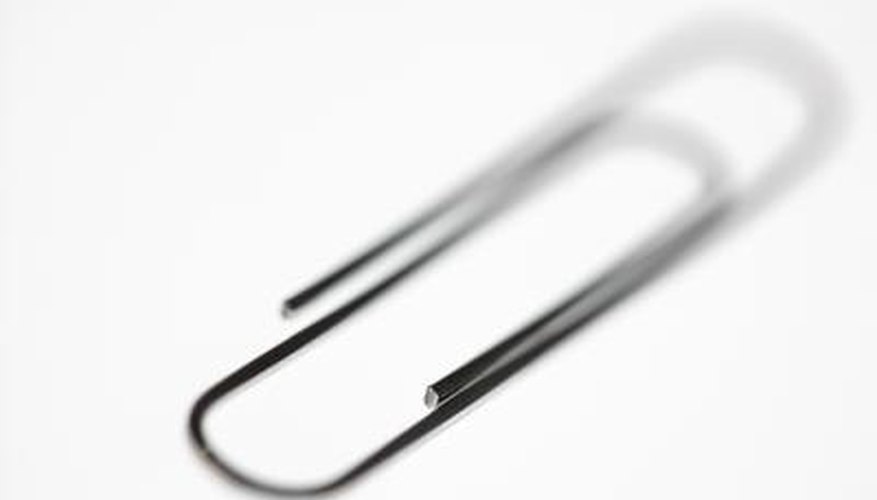When binding papers, you might immediately think staples and paper clips as the quickest fix. Both items can bind papers easily; however, thick papers might give you a bit of trouble. Luckily, there are several alternatives you can use in place of staples and paper clips.
Bulldog Clips
Bulldog clips come in different sizes, each ideal for "thicker" stacks of paper which paper clips and staples cannot handle. This clip has a bent piece of metal with two metal loops that you can press to open the "jaws" of the bent metal. Bulldog clips are reusable and do not easily deform, allowing you to use it as many times as you like. Bulldog clips come in different sizes and capacities.
- Bulldog clips come in different sizes, each ideal for "thicker" stacks of paper which paper clips and staples cannot handle.
Puncher and Paper Fastener
If you're binding papers for storage and filing, you need a more robust binder for your documents. Although a two-step process, using a puncher and paper fastener secures documents for filing, a puncher is named as such because it punches holes through papers, creating one or two holes in your paper stack. Alternatively, a basic paper fastener has two components: a long and bendable prong and a lock that secures the prong to bind the papers. Once you punched holes in your stack of papers, insert the prong of the fastener on the holes and use the lock to secure the binding.
- If you're binding papers for storage and filing, you need a more robust binder for your documents.
- Although a two-step process, using a puncher and paper fastener secures documents for filing, a puncher is named as such because it punches holes through papers, creating one or two holes in your paper stack.
Rubber Bands
Thick and wide rubber bands can serve as a temporary binders for very thick stack of papers; however, avoid using it on thin paper stacks as it will warp the paper and cause it to curl. Securing papers using a rubber band is simple -- just put a cardboard or a thick paper at the bottom of your stack and use the rubber band to secure it.
Slide Binders
If you don't want your papers to have holes or unnecessary creases and marks, then use a slide binder to do the job. Slide binders are somewhat larger and longer versions of bulldog clips, without the metal loops to open the jaws. To bind papers, "slide" the binder on the side of your paper stack ensuring that its jaws are clipping the papers. Slide binders also come in different sizes and capacities, depending on the type of paper that you want to bind.
- If you don't want your papers to have holes or unnecessary creases and marks, then use a slide binder to do the job.
- To bind papers, "slide" the binder on the side of your paper stack ensuring that its jaws are clipping the papers.
No Binder Process
For a thin stack of papers, you don't even need a paper clip or a staple to bind it. There is a simple method that you can use to easily bind papers. On the upper left side of your papers, fold the corner to create a small triangle and crease it. Use a scissor to create two one centimetre slits along the middle of the fold.
- For a thin stack of papers, you don't even need a paper clip or a staple to bind it.
- On the upper left side of your papers, fold the corner to create a small triangle and crease it.
